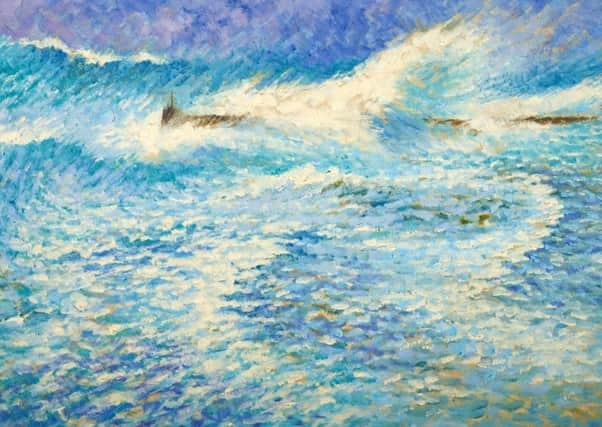Creative spirit


Jane Sellars, curator at the Mercer Gallery, has long championed the work of women artists – and the latest exhibition at the Harrogate venue is a perfect example of her commitment to this.
It showcases the work of the talented but somewhat overlooked artist and illustrator Isabel Alexander, who died in 1996 and has been described by her admirers as ‘the English Georgia O’Keefe.’
Advertisement
Hide AdAdvertisement
Hide AdSellars has been working in collaboration with the artist’s son Robin Alexander, a retired former University of Leeds Professor of Education, on a major retrospective which explores Isabel’s diverse creative output over sixty years. She was a very versatile artist, working across a range of genres and media, which Robin attributes to her rigorous training in the 1930s first at Birmingham School of Art and then at the Slade in London. “She had an incredible facility for drawing,” he says. “And that was at the root of all her work.” She continued to draw every day for most of her life and it was this ability that allowed her to move easily from one artform to another. Born in Birmingham in 1910, Isabel travelled extensively around the UK and in Europe and lived for the last 20 years of her life in Yorkshire, where she attracted a strong following. Alongside the exhibition – which will feature over 50 prints, paintings and drawings – there will be an accompanying book by artist and writer Janet McKenzie on Isabel Alexander’s life and work.
“She had a lot of exhibitions and was very successful in her lifetime – but she is not as well known as she should be,” says Robin. “I’m hoping that the exhibition and the book will bring her work to the attention of more people.” In the early part of her career Isabel worked as an art director on information and educational films with her then husband the documentary filmmaker Douglas Alexander, to whom she was married between 1939 and 1941. When their marriage broke up, with a young son to look after, Isabel continued working in film for a while, encouraged by her friend Paul Rotha, a director and producer. He also suggested she go to the Rhondda Valley in Wales in 1943 to document in drawing and painting the lives of the mining community.
“She did portraits of the miners and their wives and children. It was an artistic project but there is a strong documentary feel about it.” It is a fascinating body of work, well represented in the exhibition, and the images are at once powerful and poignant, serving as a very striking social document. After the war Isabel illustrated The Story of Plant Life, a Puffin Picture Book and so began her successful phase as an illustrator working on a variety of topics – a special interest was botany. “She spent a lot of time at Kew Gardens,” says Robin. “And she produced these very vibrant small paintings and lithographs – they have tremendous vitality.” In the early 1950s she turned to painting, producing portraits, landscapes, stunning abstract works and finally a series of haunting Hebridean seascapes. “She liked remote places,” says Robin. “And she particularly loved the coast, visiting Dorset and Northumberland and most of the inhabited Scottish islands.”
Robin says that he has vivid memories of his mother working when he was a child. “They come flooding back whenever I go into a school of art and there is that smell of oil paint and turpentine. The 1940s were very tough, with no permanent job and a young son, but she worked all the time. She was totally dedicated and incredibly single-minded about her work.”
At the Mercer Gallery, Harrogate, January 14-June 4.